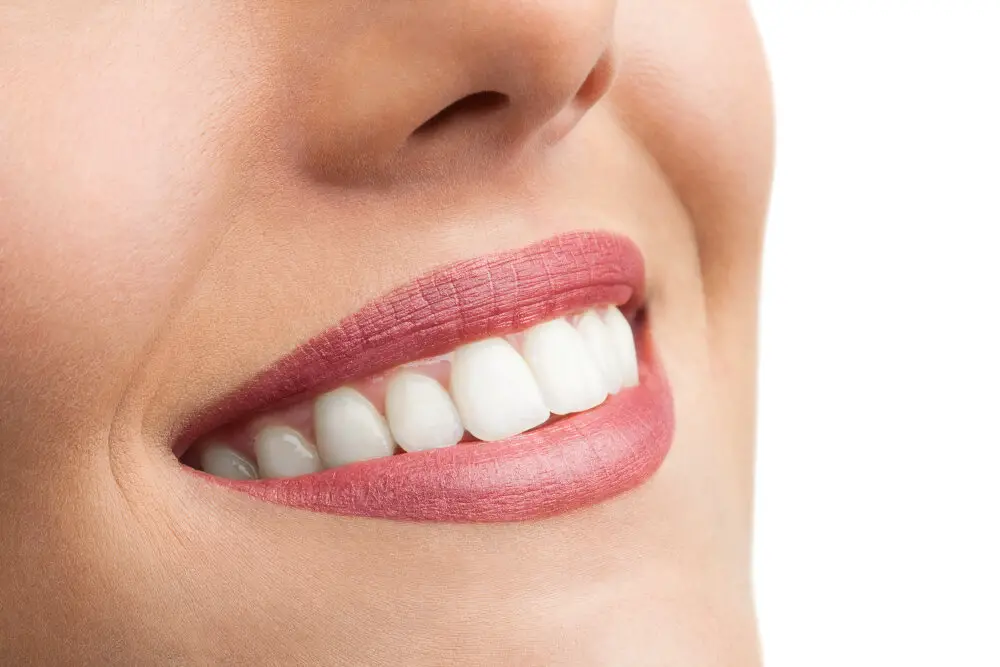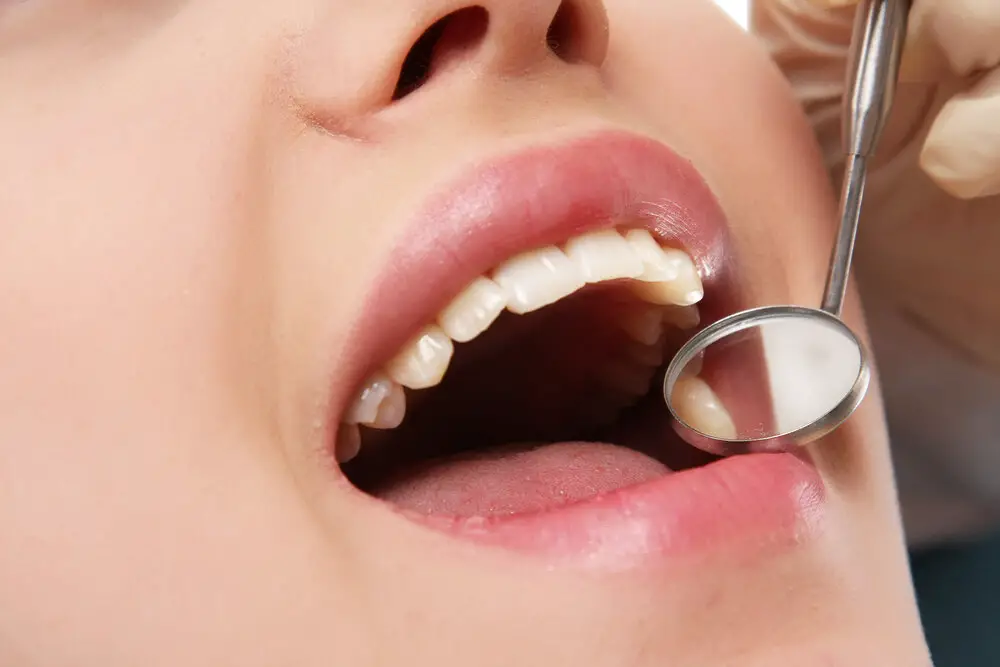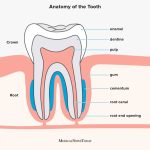Why Do Some People Have Pointy Teeth? Exploring the Anatomy and Evolutionary Purpose Behind Tooth Shape

The human mouth is a complex and fascinating part of our anatomy, containing a variety of different teeth that serve different functions. From the sharp incisors at the front of the mouth to the flatter molars at the back, each type of tooth plays a crucial role in the process of biting, chewing, and grinding food. But why do some people have teeth that are more pointed or sharp than others? Is there an evolutionary purpose behind these variations in tooth shape, or are they simply random anomalies?To answer these questions, we need to delve deeper into the anatomy of teeth and explore the different factors that can influence their shape and structure. From genetics and diet to environmental factors and evolutionary history, there are many different factors that can contribute to the development of pointed teeth in some individuals. By examining these factors in detail, we can gain a better understanding of why some people have pointy teeth and what this might tell us about the evolution of the human species.
Pointy teeth are a type of dental structure characterized by sharp, conical tips that are designed to pierce and tear through tough food items. These teeth are found in a variety of animal species, from carnivorous predators to omnivorous scavengers, and are thought to have evolved as a means of improving hunting and feeding efficiency. In humans, pointy teeth are relatively rare, and are often referred to as \canine\ teeth due to their resemblance to the fangs of dogs and other predatory animals. While the exact purpose of these teeth in humans is still a subject of debate, some researchers suggest that they may have played a role in our evolutionary history as a means of defending against predators or improving our ability to consume tough, fibrous foods.
The shape of teeth is an essential aspect of dental anatomy that plays a crucial role in the effective functioning of the oral cavity. Teeth vary in shape, size, and structure based on their position, function, and evolutionary history. The shape of teeth impacts the way we eat, speak, and communicate, and it is a critical factor in maintaining overall oral health. The teeth’s shape also provides insights into how they have evolved over time to adapt to different dietary and environmental conditions, from sharp and pointed teeth in carnivores to flat and broad teeth in herbivores. Understanding the importance of teeth shape can help us appreciate the complexity of dental anatomy and the role it plays in our daily lives.
The article \Why Do Some People Have Pointy Teeth: Exploring the Anatomy and Evolutionary Purpose Behind Tooth Shape\ delves into the different types of teeth humans possess and the reasons behind their distinct shapes. The author explains that teeth are vital for various functions such as biting, chewing, and tearing food. They also play a crucial role in speech and overall facial structure. The article explores the evolutionary history of teeth, highlighting that tooth shape has undergone significant changes over time to adapt to the changing dietary habits of humans. The author also discusses the role of genetics and environmental factors in determining tooth shape. Overall, the article provides a fascinating insight into the complexity of human teeth and their purpose in our evolution.
Types of Teeth

Teeth are an essential part of the human body that serve a variety of functions, such as biting, chewing, and grinding food. However, not all teeth are created equal, and they come in different shapes and sizes to perform specific tasks. There are four main types of teeth in the human mouth: incisors, canines, premolars, and molars. Each type of tooth has a unique shape and function that allows them to perform their designated tasks. Incisors are located at the front of the mouth and are the most recognizable teeth. They are flat and have a sharp edge that allows them to cut through food, such as fruits, vegetables, and meat. Canines, on the other hand, are the sharp, pointy teeth located next to the incisors. They have a longer root and a pointed tip that makes them ideal for tearing and ripping food. Premolars are located between the canines and molars and have a flat surface that helps grind and crush food. Lastly, molars are located at the back of the mouth and have a large surface area that allows them to grind and crush food efficiently. Understanding the different types of teeth and their functions can help us take better care of our oral health and improve our overall well-being.
Human teeth are divided into four main types: incisors, canines, premolars, and molars. Incisors are the front teeth that are used for cutting and biting into food. They have a flat, rectangular shape with sharp edges. Canines are the pointed teeth located next to the incisors. They are used for tearing and gripping food. Canines have a long, pointed crown with a single root. Premolars are the teeth located between the canines and molars. They have two cusps and are used for grinding and crushing food. Molars are the largest teeth in the mouth and are located at the back of the mouth. They have four or five cusps and are used for grinding and chewing tough food. The shape and size of teeth vary among individuals and are influenced by genetics, diet, and environmental factors.
Each type of tooth in the mouth has its own unique function. Incisors, which are the flat, thin teeth at the front of the mouth, are primarily used for biting into and cutting food. Canines, also known as fangs, are the pointed teeth that sit next to the incisors and are used for tearing and gripping food. Premolars, which are located between the canines and molars, have cusps that make them ideal for crushing and grinding food. Molars, which are the largest teeth in the mouth, have a larger surface area and multiple cusps that aid in grinding and crushing food. The variety in tooth shape and function reflects the evolutionary adaptations that different species have developed in order to survive and thrive on their specific diets.
The animal kingdom is filled with a diverse range of tooth types, each uniquely adapted to suit the dietary needs of a particular species. For instance, carnivores like lions and tigers have sharp, pointed teeth that are designed for tearing and shredding meat, while herbivores such as cows and horses have flat, wide teeth that are ideal for grinding and chewing tough plant matter. Some animals even have specialized teeth for hunting, such as the venomous fangs of snakes or the saber-like teeth of the extinct saber-toothed tiger. Meanwhile, other animals like dolphins and walruses have evolved teeth that are perfectly suited for catching and consuming slippery prey in aquatic environments. Regardless of their shape or size, teeth are a vital part of an animal’s anatomy, enabling them to efficiently obtain the nutrients they need to survive.
Tooth Anatomy

Tooth anatomy is a fascinating subject that has intrigued scientists and researchers for centuries. Teeth are complex structures that play a vital role in our everyday lives. They help us to chew and digest food, speak clearly, and even give us a winning smile. Understanding the anatomy of teeth is key to maintaining good oral health, as well as understanding the evolutionary purpose behind their various shapes and sizes. Teeth are made up of several layers, including enamel, dentin, and pulp. Enamel is the hard, outermost layer of the tooth, which protects the softer, more sensitive layers beneath. Dentin is the layer that lies beneath the enamel and is responsible for the tooth’s structure and strength. The pulp is the innermost layer of the tooth and contains nerves and blood vessels that keep the tooth alive. Each tooth has a crown, which is the part that is visible above the gum line, and a root, which anchors the tooth in the jawbone. The shape and size of teeth can vary greatly from person to person, depending on factors such as genetics, diet, and environment. Some people have pointy teeth, while others have flat or rounded teeth, and each shape serves a different purpose.
The structure of teeth is a fascinating subject that can shed light on their evolutionary purpose and shape. Teeth consist of three different layers: the enamel, dentin, and pulp. Enamel is the hard, outer layer that covers the crown of the tooth and is the hardest substance in the human body. Dentin is the second layer, which makes up the bulk of the tooth and is softer than enamel. The pulp is the soft, innermost layer of the tooth, which contains blood vessels and nerves. Teeth come in a variety of shapes, with some being flat and broad for grinding, while others are pointed and sharp for tearing and cutting. These variations in tooth shape can be attributed to the specific dietary needs of different species throughout evolution.
The anatomy of teeth is fascinating, and understanding the different layers can help shed light on why teeth come in various shapes and sizes. Teeth have three layers: the enamel, dentin, and pulp. Enamel is the outermost layer of the tooth and is the hardest substance in the body. It is primarily composed of hydroxyapatite crystals and serves as a protective layer against wear and tear. Dentin is the second layer and is softer than enamel. It makes up the bulk of the tooth and provides structural support. The pulp is the innermost layer and contains nerves and blood vessels that nourish the tooth. The shape of teeth is determined by a combination of genetic and environmental factors, and different shapes have evolved to serve specific functions, such as biting, tearing, and grinding. The pointed teeth of carnivores, for example, are adapted for tearing meat, while the flat molars of herbivores are designed for grinding tough plant material.
The composition of teeth is an intricate and complex system that has evolved over millions of years to serve a variety of functions. Teeth are made up of several layers, including enamel, dentin, pulp, and cementum, each of which plays a critical role in the tooth’s overall structure and function. Enamel is the hard, outer layer of the tooth that provides protection against wear and tear, while dentin forms the bulk of the tooth and provides support and structure. The pulp contains blood vessels and nerves that supply the tooth with nutrients and sensation, and cementum is a thin layer that covers the tooth’s root and helps anchor it to the jawbone. Together, these layers work in harmony to create a strong, durable, and functional tooth that is capable of performing a wide range of tasks, from biting and chewing to speaking and smiling.
Tooth structure plays a vital role in determining the shape of teeth. Teeth are made up of different layers, including enamel, dentin, and pulp. Enamel is the outermost layer of the tooth, and its thickness and shape can influence the tooth’s shape. Dentin, a layer beneath the enamel, is softer and more flexible than enamel, and it can also affect the tooth’s shape. The pulp, located at the center of the tooth, contains nerves and blood vessels that supply the tooth with nutrients and oxygen. The shape of the pulp chamber can also impact the shape of the tooth. Additionally, genetic and environmental factors can also affect tooth structure, leading to variations in tooth shape. Overall, tooth structure is a complex and multifaceted factor that contributes to the diversity of tooth shapes seen in different species and individuals.
Evolutionary Purpose of Tooth Shape

Tooth shape has evolved over millions of years to meet the dietary needs of various species. Different animals have developed unique tooth shapes to adapt to their specialized diets and lifestyles. For instance, herbivores have evolved molars with flat surfaces to grind down tough plant material, while carnivores have sharp, pointed teeth to tear flesh apart. Omnivores, on the other hand, have a combination of incisors, canines, and molars that allow them to consume a variety of foods. The evolutionary purpose of tooth shape is not limited to just diet. Teeth have also played a crucial role in the survival and reproduction of various species. For instance, the tusks of male elephants have evolved to become larger and sharper, making them better equipped to fight off rivals during mating season. Similarly, the canine teeth of male baboons have evolved to become larger and more prominent, allowing them to intimidate and assert dominance over other males within their social hierarchy. The shape and size of teeth have, therefore, played a crucial role in the survival and reproductive success of various species throughout evolutionary history.
Tooth shape is a crucial aspect of dental anatomy that has evolved significantly over time. The first jawed vertebrates, known as placoderms, possessed simple, conical teeth that were primarily used for grabbing and crushing prey. As fish evolved into amphibians and reptiles, teeth became more specialized, with some species developing pointed, serrated teeth for tearing meat, while others developed flat, grinding teeth for processing vegetation. In mammals, teeth have become even more complex, with different types of teeth serving different functions, such as molars for crushing and grinding and incisors for cutting. The shape of teeth has been shaped by both genetic and environmental factors, with diet playing a significant role in determining tooth shape and size. Overall, the evolution of tooth shape is a testament to the remarkable adaptability of life and the ways in which natural selection has shaped organisms to meet the challenges of their environment.
The shape of our teeth is closely related to the diet of our ancestors. In general, our teeth are adapted to the types of foods that were available in the environments where our ancestors lived. For example, the molars of herbivores are generally flat and broad, allowing them to grind tough plant material. In contrast, the molars of carnivores are typically sharp and pointed, allowing them to tear flesh. Similarly, the incisors of herbivores are often flat and broad, while those of carnivores are sharp and pointed. Over time, as human diets have changed, so too have our teeth. For example, the advent of agriculture and the consumption of softer, processed foods has resulted in changes to tooth shape in many populations.
The shape of our teeth has evolved over time to suit our dietary needs. For instance, herbivores have flat molars that are perfect for grinding and chewing tough plant material. In contrast, carnivores have sharp, pointed canines that are ideal for tearing meat. Omnivores, like humans, have a combination of teeth that allow us to eat a variety of foods. Our incisors are sharp and designed for biting into food, while our molars are flatter and better suited for grinding and crushing. Some people have more pronounced canines, which may be a result of genetics or a leftover trait from our evolutionary past as hunters and gatherers. Overall, tooth shape is a fascinating example of how evolution has adapted different species to their unique dietary needs.
Factors Affecting Tooth Shape in Humans

The shape of teeth in humans is influenced by multiple factors, including genetics, diet, and evolutionary adaptation. Dentists and anthropologists have studied teeth extensively to understand how these factors affect tooth shape in different populations. One of the most significant factors is genetics, which determines the shape and size of teeth in an individual. This is why people from the same family tend to have similar tooth shapes. However, environmental factors, such as diet, can also impact tooth shape. For instance, people who consume a lot of tough, fibrous foods may have flatter teeth that are better suited to grinding and chewing. On the other hand, those who consume softer foods may have sharper teeth that are better suited to tearing and slicing. Another important factor in tooth shape is evolutionary adaptation. Teeth have evolved over millions of years to meet the needs of different species. In humans, the shape of our teeth reflects our omnivorous diet and the need to break down a wide range of foods. For instance, our molars have large, flat surfaces that are ideal for grinding tough plant matter, while our canines are pointed and sharp, allowing us to rip and tear meat. Interestingly, the shape of human teeth has changed over time, both as a result of evolution and cultural practices such as cooking and agriculture. For example, our ancestors had larger canines than we do today, as they relied more heavily on hunting for survival. As our diets have shifted over time, our teeth have adapted accordingly, becoming smaller and flatter overall.
Genetics plays a significant role in determining tooth shape, which can vary greatly between different individuals and even within the same mouth. The size, shape, and arrangement of teeth are all influenced by genetic factors, and variations in these genes can result in a wide range of tooth shapes, from pointy incisors to flat molars. Tooth shape is also affected by evolutionary pressures, with different tooth shapes evolving over time to suit the dietary needs of different species. For example, carnivorous animals typically have sharp, pointed teeth for tearing flesh, while herbivores have flatter, broader teeth for grinding tough plant material. Understanding the genetics and evolutionary purpose behind tooth shape can provide valuable insights into the biology of different species, as well as the factors that contribute to dental health and disease in humans.
Environmental factors play a crucial role in shaping the teeth of animals. For example, herbivorous animals such as cows have flat teeth for grinding plants, while carnivorous animals such as lions have sharp, pointed teeth for tearing meat. Similarly, human teeth are also influenced by environmental factors such as diet and chewing habits. For instance, people who consume tough foods like nuts and meat have stronger and more robust teeth, whereas those who consume soft foods have relatively weaker teeth. Moreover, the shape and size of teeth can vary depending on geographical location, as people living in colder regions tend to have larger teeth for better biting and chewing, while people living in warmer regions have smaller teeth due to the availability of softer foods. Therefore, environmental factors are critical in determining the shape and structure of teeth, which ultimately affects the functionality and efficiency of the mouth.
Orthodontics plays a vital role in correcting tooth shape abnormalities, such as overcrowding, misalignment, and malocclusion. Orthodontic treatments, such as braces, aligners, and retainers, can help straighten and reposition teeth to achieve a harmonious and functional bite. In addition to improving aesthetics, orthodontic interventions can also enhance oral health by reducing the risk of decay and gum disease caused by tooth overcrowding and misalignment. By correcting tooth shape, orthodontics can also help individuals improve their speech, chewing, and overall oral function. Overall, orthodontics is a valuable tool in achieving optimal tooth shape and function, and plays a crucial role in maintaining oral health and wellbeing.
The shape of teeth differs among species and even between individuals within a species, leading to the question of why some people have pointy teeth. One reason is that tooth shape is closely related to diet and the function of teeth in processing food. Pointy canines, for example, are often associated with a carnivorous diet. Another factor is evolutionary history, with some species evolving pointy teeth for specific purposes such as defense or competition for resources. Even within humans, variation in tooth shape is influenced by genetics and can have cultural and social significance. Overall, understanding the anatomy and evolutionary purpose behind tooth shape can provide insights into the biology and behavior of different species, including our own.
In conclusion, the shape of our teeth is a fascinating evolutionary adaptation that has helped us survive and thrive in different environments. From the sharp and pointed teeth of carnivores to the flat and grinding teeth of herbivores, each tooth shape has a specific function that has been honed through millions of years of evolution. Our own teeth, with their combination of sharp incisors, pointed canines, and flat molars, are a testament to our omnivorous diet and the need to consume a variety of foods. By studying tooth shape and evolution, we can gain a better understanding of our own origins and the complex web of interactions between species that has shaped our planet.
The shape and arrangement of teeth play a crucial role in maintaining dental health and proper orthodontic function. Pointy teeth, also known as canine teeth, serve a variety of functions, including assisting in biting and tearing food, aiding in speech production, and providing structural support to the mouth. However, these sharp teeth can also create problems such as overcrowding, malocclusion, and tooth decay if not properly aligned. Orthodontics can help correct these issues and improve overall dental health by realigning the teeth and improving their functionality. Understanding the evolutionary purpose behind tooth shape can provide valuable insights into the development of modern dental treatments and techniques.
Conclusion

In conclusion, the shape of our teeth is a fascinating reflection of our evolutionary history and dietary habits. While some individuals may have pointy teeth due to genetic factors or dental abnormalities, most people possess a mix of different tooth shapes that serve specific functions in biting, tearing, and grinding food. Through millions of years of adaptation, our ancestors developed teeth that were optimized for their particular diets and lifestyles, leading to a wide variety of dental shapes and sizes across different species. By understanding the anatomy and evolutionary purpose behind tooth shape, we can gain a deeper appreciation for the incredible complexity and adaptability of the human body.







